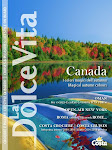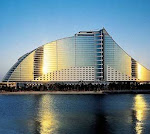Tunis, the capital city of Tunisia is definitely interesting from an artistic and architectural point of view in that it brings together in a masterly manner the east and the west. Its old city is most definitely eastern with its medieval art treasures of the Islam world, but all around it there spreads a European city in which nothing is left wanting in the sense of classical features or freedom. The Medina is the historical and cultural heart of Tunis and houses the principal features of the city. The Moschea dell’Ulivo is the most important cultural place in the city which was built for the first time in 732 AD. It was then rebuilt into its present form by the Hafsifi between the 13th and 15th centuries. The mosque is made up of a library, an inside courtyard and a prayer room. The courtyard can be visited by non –Muslim tourists, and is surrounded by columns with geometrical ornaments. The minaret is 44 metres high and was built in 1894, a landmark for the whole city. The mosque is encircled by the characteristic Souk.(an open marketplace.) To get a stupendous view of the area, just get up onto the roof of the bazar which surround the souk. They are decorated with ceramic brick-work which are hand painted and form columns, arches and little windows giving out onto the little by-ways below.
You can’t leave Tunis without having penetrated into these chaotic places of strange scents and colours. Inside the Souk you can find hand made items of all types: carpets, hides, crockery and clothes. Going beyond this market area you’ll arrive at the enormous Place de la Casbah which is characterised by an elegant flooring of local granite ;in the centre of this you’ll see in all its grandeur a modern monument to independence. For here begins the “Ville Nouvelle” which extends around the central Avenue Habib Bourguiba.
We would heartily recommend a visit to the spectacular Museo del Bardo , one of the most important in the world for its collection of masks and Roman mosaics. The remains kept here were created between the 2nd. and 4th. centuries and then discovered during archaeological digs in various sites in Tunisia.
Carthage was founded according to the legend of Didone in 814 BC, and became very powerful, extending its dominion over most of the Mediterranean area. Due to this fact it went into war with first the Greeks and then the Romans. Rome then declared war against Carthage and with the third Punic war and an onslaught lasting three years, the city was completely destroyed. Thereafter it was rebuilt by Caesar and became the fifth colony of Urbe. Although very little remains today of the old constructions of the six main archaeological sites ,certain particulars are very interesting. You can get a lovely view of the area by climbing up the hill of Byrsa. At the foot of the hill there is the San Luigi cathedral which was built by the French in 1890 and dedicated to the king/saint who died on the beach of Carthage during the 8th.crusade in 1270.
Traces of the Roman Amphitheatre , which apparently was one of the biggest in the empire, can be seen as you come down the hill. However, most of the masonry of this amphitheatre was taken away to be used in buildings elsewhere.
The picturesque village of Sidi Bou Said is situated about twenty kilometres from Tunis and is placed on the very top of a hill. White and blue are the symbols of colour of Tunisia and these colours are not only for the enjoyment of the tourists but are also used in the meeting places of the Tunisian and foreign artists.
Pay special attention to the beautiful decorated blue doorways of extraordinary symmetry obtained by using strategically placed black nails. Located on the walls of startling white we can see characteristic small balconies closed off with metal meshing.
The inside courtyards are often brightly decorated with geraniums and bougainvillea. The centre of the village is a minute square in which stands out the famous Café del Nattes, with its traditional mats on which you can sit while you drink delicious mint tea with pine seeds and honey. There is an abundance of market stalls and little shops of all shapes and sizes, selling carpets, crockery, polished brass dishes, articles made out of hide.
Tuesday, February 10, 2009
Subscribe to:
Post Comments (Atom)














No comments:
Post a Comment